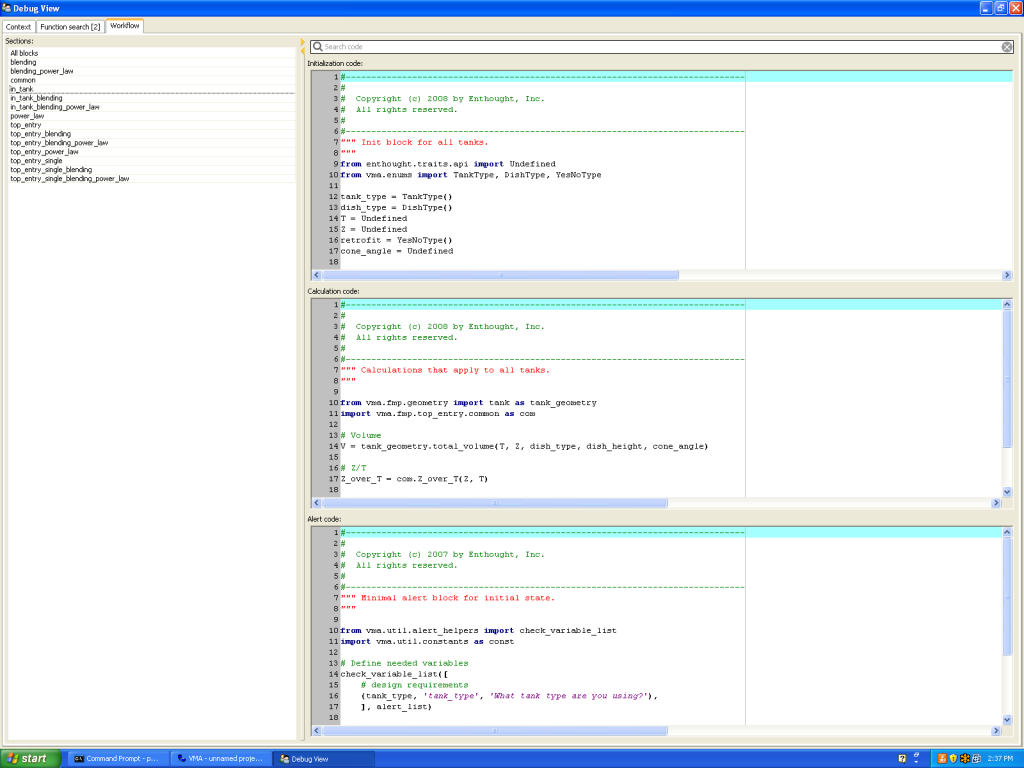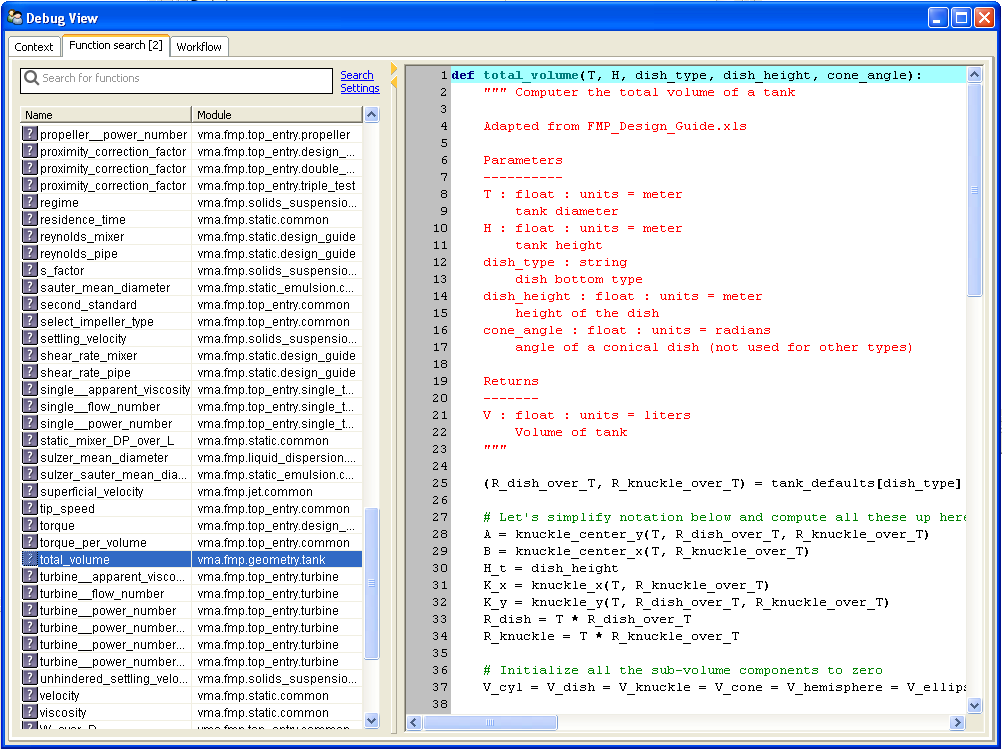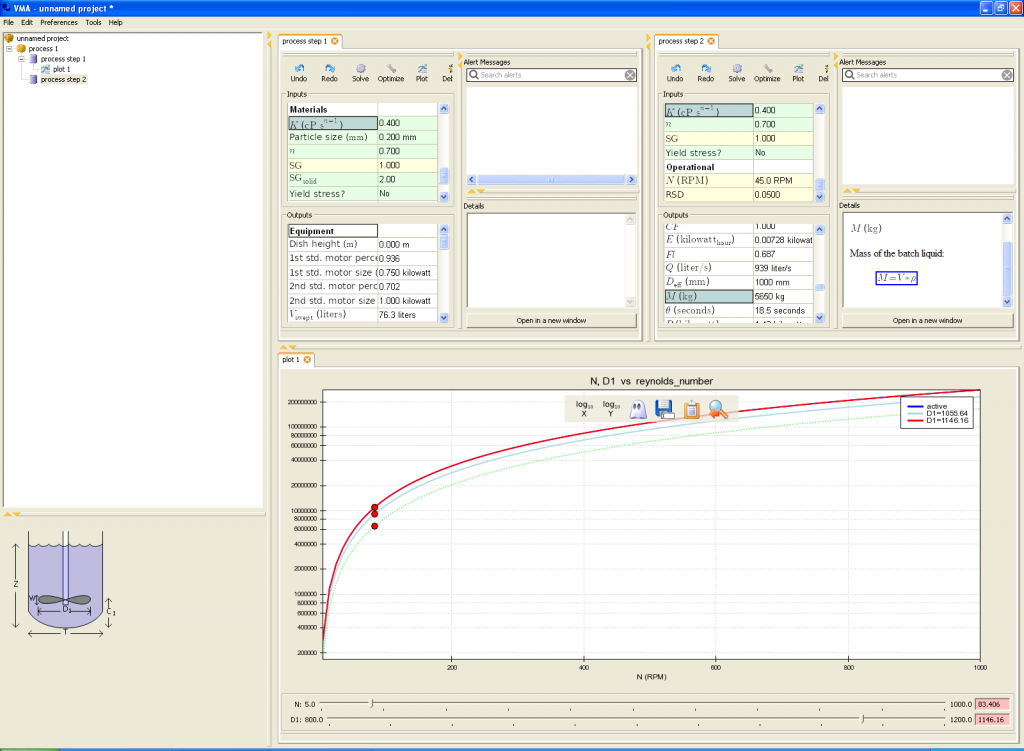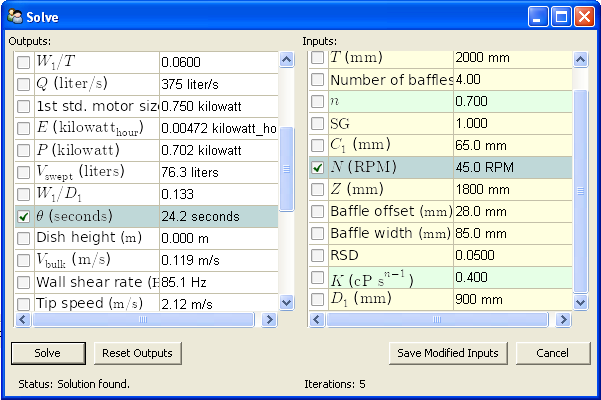CHALLENGE:
- Deep expertise in fluid mixing was not being leveraged by engineers in production process design
- Individual spreadsheets and local knowledge were resulting in over-designed or flawed systems
SOLUTION:
- Develop a GUI application of wizard pages with a spreadsheet style interface driven by physics and expertise
- Enable engineers to create interactive plots, experiment with parameter values, respect the physics
RESULT:
- Mixing experts can update experimentally determined formulas using Python scripts, with application integrity maintained
- Engineers can scale up prototype systems to production ones, iteratively respecting key dimensionless parameters and design constraints
Challenge
A significant part of Procter and Gamble’s (P&G) manufacturing involves mixing fluids. P&G spends resources to design mixing systems that optimize this process. Many of the engineers responsible for designing production processes are not experts in mixing, but also do not need the complexity of a computational fluid dynamics tool like Virtual Mixing System (VMS) to solve most of their problems. Rather, they need an interactive design guide that can lead them through the process of designing a piece of mixing equipment for their particular need, while pointing out common pitfalls and places where they need to bring in a mixing expert to help them with their problem.
Design parameters are determined through a combination of the physics of the particular situation and experimentally derived correlations between input parameters and quantities of importance for a design. P&G was using a series of web pages which led users through design parameters before depositing them in an appropriate Excel spreadsheet where precise values could be entered and results derived. However, users would skip the website and simply go straight to the spreadsheet they wanted, ignoring any guidance or warnings that the pages may provide. In addition, the correlation formulas in the spreadsheets did not reflect the current state of the art. As a result costly design errors were occurring both through unneeded over-design, and, perhaps more importantly, flawed and inoperative designs.
Solution
We constructed a GUI application that leads users through the design process with a series of wizard pages, and then provides them with a spreadsheet like interface where inputs can be tweaked and compared interactively. Interactive alerts inform the user of potential problems with his design, including links to a wiki where the issue is discussed in depth. Since P&G is a global corporation, users can enter and express values in whatever units they are most used to working with (even combinations of metric and US units) while still producing the correct output.
The application allows the user to produce interactive plots which compared values across different parts of the design space, and to find parameter values which solve for constraints based on their requirements. A special scale-up screen allows users to take a prototype system and compare it with a production system, ensuring that certain key dimensionless parameters remain constant through the scale-up. In addition, since the state of the art of the experimentally determined formulas changes from time to time, all of the computations are provided as Python scripts which mixing experts can update as needed without worrying about the integrity of the application as a whole.
Want to learn more about what we can help you achieve? Contact Us.
Sample Elements
Edit code blocks

View available functions

Main screen

Solver
